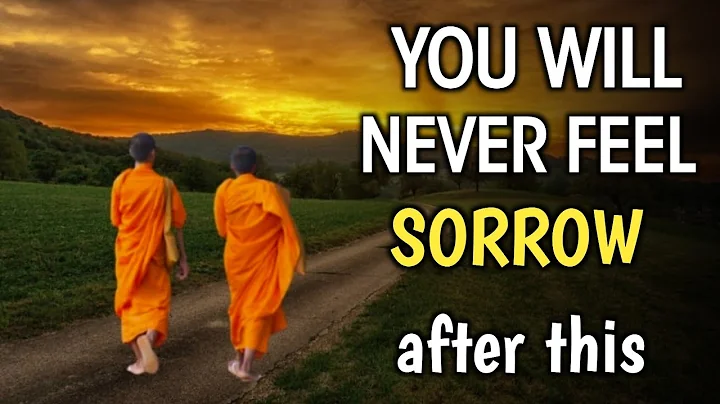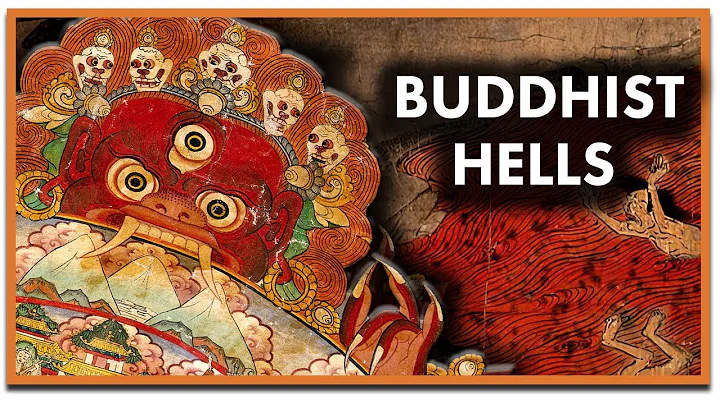Longxing Temple , also known as Big Buddha Temple, is located in the east gate of Zhengding County, Shijiazhuang City, Hebei Province. It was built in the sixth year of Kaihuang in the Sui Dynasty (586). It was originally named Longzang Temple, and the Tang Dynasty was renamed Longxing Temple, and the Kangxi 40th century was the Kangxi 40th century. In the ninth year (1710), the "Longxing Temple" was awarded the title and has been used to this day. It is one of the earliest, large and complete Buddhist temples in China.

Longxing Temple gate
Longxing Temple main buildings are distributed on a north-south central axis and its sides. There is a tall glass screen wall in front of the temple, passing through three roads and three-hole stone bridges to the north, which are: Tianwang Hall, Tianjue Sixth Master Hall (site), Mani Hall , Jietan, Cishi Pavilion , and Zhuanghun Pavilion , Kangxi Imperial Stele Pavilion, Qianlong Imperial Stele Pavilion, Imperial Book Building (site), Dabei Pavilion , Jiqing Pavilion (site) and Amitabha Hall, etc.

glass screen wall

glass screen wall
Longxing Temple has many "world's best". For example, the Mani Temple, with the most peculiar shape, is praised by Chinese ancient construction experts as an isolated case of ancient architecture in the world. The most beautiful colorful hanging statue of Guanyin, the earliest existing regular script inscription " Longzang Temple Stele ", the oldest wheel-running, the most exquisite copper casting in ancient China, the highest and oldest thousand Hand Thousand Eyes Guanyin , etc., all have extremely high artistic value.
The most peculiar shape of Mani Hall
Mani Hall main structure is very unique. A mountain flower is coming forward from the middle of the square hall body, making the plane form a "cross" shape. The brackets under the eaves are grand and sparsely distributed; the pillars are thick and have obvious curling brakes, side angles and arise; the ridges of the palace and flying eaves are curved like waves, naturally and smooth; the four corners are slightly raised, like birds flapping their wings and about to fly.

Mani Palace

Mani Palace

Mani Palace

Stone Tower
Ancient buildings like this with a heavy appearance, great change, and a very special shape, are a model of the Song Dynasty's " Creation of French " and were Mr. Liang Sicheng It is known as an isolated case of ancient architecture in the world and has extremely high historical, scientific and artistic value.
The most beautiful colorful hanging statue of Guanyin
The north wall of the groove in the Mani Hall is a clay-shaped five-color hanging mountain from the Song Dynasty. There are more than 30 Buddha statues on the hanging mountain. The most eye-catching thing is the colorful free Guanyin statue sitting upright in the middle, commonly known as " Sitting in Guanyin ”. Guanyin statue is 3.4 meters high, with the left foot on the lotus, the right leg is raised, the knees with both hands, the body is slightly tilted forward, the face is beautiful and quiet, and the posture is elegant and dignified. Below the willow eyebrows, the pair of wise and profound eyes looked down slightly, forming emotional communication with the Buddha's worshipper. This humanized Buddha statue is called "the beautiful god of the East" by Mr. Lu Xun.

five-colored hanging mountain

sits in the backwards Guanyin

The oldest wheel is hidden
the diameter is seven meters. It is a rotating bookshelves that collect scriptures. It looks like an octagonal pavilion with wooden shafts in the middle and the pavilion body is equipped with sutras. It can store Buddhist scriptures and can be rotated when pushed. Taking the meaning of Buddhism's "The Dharma wheel always rotates, and it will never stop automatically", it means that Buddhism is like a wheel passing on and passing on, never stopping.

Rotary wheel inside the cabinet

Rotary wheel
Buddhism also says that it is the same as reading scriptures. This architectural shape has been preserved in China. The Song Dynasty wheel storage in the Longxing Temple Roller Pavilion in Zhengding is the earliest existing wheel storage in China.
The earliest existing regular script stele inscribed in the Sui Dynasty "Longzang Temple Stele"
Longzang Temple Stele is the full name of "The Governor of Hengzhou, Duke E, encouraged the construction of the Longzang Temple Stele for the State", and is the earliest existing regular script stele inscribed in China. In the history of Chinese calligraphy development, the Sui Dynasty was a transitional period of development from Han Li to Tang Kai , and the Longzang Temple Stele is the representative work of this period. Its font is square and orderly, with a rigorous structure, with a sluggish and broad brushwork, simple and clumsy without losing its elegance, solemn but not dull, and has a position of inheriting the past and opening up the future in terms of calligraphy structure and brushwork. It is a precious object to study the history of the development of Chinese calligraphy art. material.
The famous modern scholar Kang Youwei praised "This stele integrated by the Six Dynasties is not the first stele of the Sui Dynasty", and later generations also called it the first stele of regular script.

Longzang Temple Stele
The largest and oldest Thousand Hand Thousand Eyes Guanyin
Dafei Pavilion is the main building of Longxing Temple. The pavilion is the famous bronze cast of the Song Dynasty "Thousand Hand Thousand Eyes Guanyin Bodhisattva", commonly known as "Zhengding Mansion". Great Bodhisattva.” It was cast for the fourth year of Kaibao in the Northern Song Dynasty (971) at the order of Taizu Zhao Kuangyin. It is 21.3 meters high and has a total of 42 arms. In addition to its two hands and eyes, there are 20 hands on the left and right sides of the body, holding the sun, moon, clean bottle, vajra , sword and other magical tools. The bronze statue has a tall body and moderate proportions. Its size and fine carving are rare. It is the largest and oldest statue of Thousand Hands and Thousand Eyes Avalokitesvara Bodhisattva among the ancient bronze Buddha statues in the world.

Thousand Hands Thousand Eyes Guanyin

Exquisite Song Dynasty stone carvings on the Buddha altar
The most exquisite copper cast of Vairocana in ancient China
Vilu Hall is located at the end of the central axis of Longxing Temple. The Vairocana Buddha in the hall is a national treasure. Vairocana Buddha designed by Vairocana Buddha. Unique and exquisite, it was made by Emperor Wanli of the Ming Dynasty, Zhu Yijun, for his biological mother, the charitable Empress Dowager. This Vairocana Buddha is all made of bronze, 6.72 meters high, and is made of three-layer sitting Vairocana Buddha and three-layer round drum-shaped lotus seats. There is a small sitting Buddha on the three-layer lotus petals of the Rose, with a variety of expressions and handprints. There are 1,072 Buddha statues of all sizes on the entire statue.

Copper cast Vairocana
Song Dynasty wood carving Maitreya Buddha
Cishi Pavilion is generally similar to the Wheel Collection Pavilion. The cabinet adopts the practice of Yongding column construction and reduced column construction, which is its architectural structure. In particular, the columns around the eaves are made of Yongding columns, which is an isolated case in the preservation of Song Dynasty architecture in China. On the 2-meter-high Sumeru mount, there is a wooden statue standing on the of the 2-meter-high , which is seven meters high. It is the image of Maitreya Buddha, or " Cishi Bodhisattva ", which is a relic of the Song Dynasty.

Maitreya Buddha carved in a whole boxwood
The exquisite Song Dynasty Buddha statue and Ming Dynasty murals
0 The nine inner grooves in the Mani Hall are in the middle of the Song Dynasty statue, one Buddha and two disciples statues and Ming Dynasty replenishment Manjushri , The two Bodhisattvas of Virtue. In the middle is statue of Sakyamuni , the east disciple statue of Kashyapa , and the west disciple statue of Ananda . The statues of Manjushri and Samantabhadra Bodhisattva on both sides are sitting cross-legged on the supremnant of the Sumeru pedestal. Under the slightest light and darkness of the inner groove, the sitting statue shows the solemn appearance of the Dharma.

Song Dynasty Buddha statues
There are painted murals in the four walls of the Mani Hall, painting Western Scenic Sites,  8 Vows ,
8 Vows ,  4 Heavens and other Buddhist themes. The mural was painted in the Ming , Chenghua years. The characters in the picture are vivid in their minds, beautiful in their scenery, smooth and vigorous in their brushwork, with the rules of in the Southern Song Dynasty; their composition and structure are also influenced by the painting methods of in the Northern Song Dynasty and Jin Dynasty, and have certain characteristics of literati painting in their . . The characters' clothing lines are skillfully drawn, and the lines of flowers, bamboo and stone are refined. Especially the appearance of plum blossoms and bamboo and stone as single pictures is extremely rare in previous murals.
4 Heavens and other Buddhist themes. The mural was painted in the Ming , Chenghua years. The characters in the picture are vivid in their minds, beautiful in their scenery, smooth and vigorous in their brushwork, with the rules of in the Southern Song Dynasty; their composition and structure are also influenced by the painting methods of in the Northern Song Dynasty and Jin Dynasty, and have certain characteristics of literati painting in their . . The characters' clothing lines are skillfully drawn, and the lines of flowers, bamboo and stone are refined. Especially the appearance of plum blossoms and bamboo and stone as single pictures is extremely rare in previous murals.

Western Sights

Twenty-four Heavens
along the axis through the wooden archway on the back of the Mani Hall. There is a locust tree with a life of more than 1,600 years on both sides of the corridor, one is a dragon locust and the other is a phoenix locust.

Drizzle and a squeaking autumn wind, we walked into Longxing Temple. It was a lucky trip. We invited a researcher to follow his footsteps and accompanied by wonderful explanations. We were filled with joy. The number of cultural relics here is beyond imagination.
Zhengding Longxing Temple, a place with many cultural relics and national treasures!
Zhengding Ancient City , a place with brilliant culture and a long history, and a place that friends who like ancient buildings should not miss!
Come here and witness these treasures buried in time and still shining brightly;
Come here and travel through the long river of history and touch the brilliant culture in this long river;
Come here and walk into the ancient streets and temples, and climb up The ancient city walls, feel the city charm for thousands of years and enjoy the colorful city night view.
You will definitely be worth this trip!

Zhengding Ancient City South Gate

Zhengding Ancient City Night Scene

Zhengding Ancient City Night Scene







![[English] Who Am I - Lecture 1 - Ven. Guan Cheng - DayDayNews](https://i.ytimg.com/vi/KU0fUs2It5o/hq720.jpg?sqp=-oaymwEcCNAFEJQDSFXyq4qpAw4IARUAAIhCGAFwAcABBg==&rs=AOn4CLDFpQUN_QwRfC7bmP4sUadq-RcYdg)
![A Moving Masterpiece 清明上河图 [English narration] - DayDayNews](https://i.ytimg.com/vi/kxff-4GktOI/hqdefault.jpg?sqp=-oaymwEcCOADEI4CSFXyq4qpAw4IARUAAIhCGAFwAcABBg==&rs=AOn4CLBtHGLeUpJNCYDJYnZTuISQ1N5Vag)


